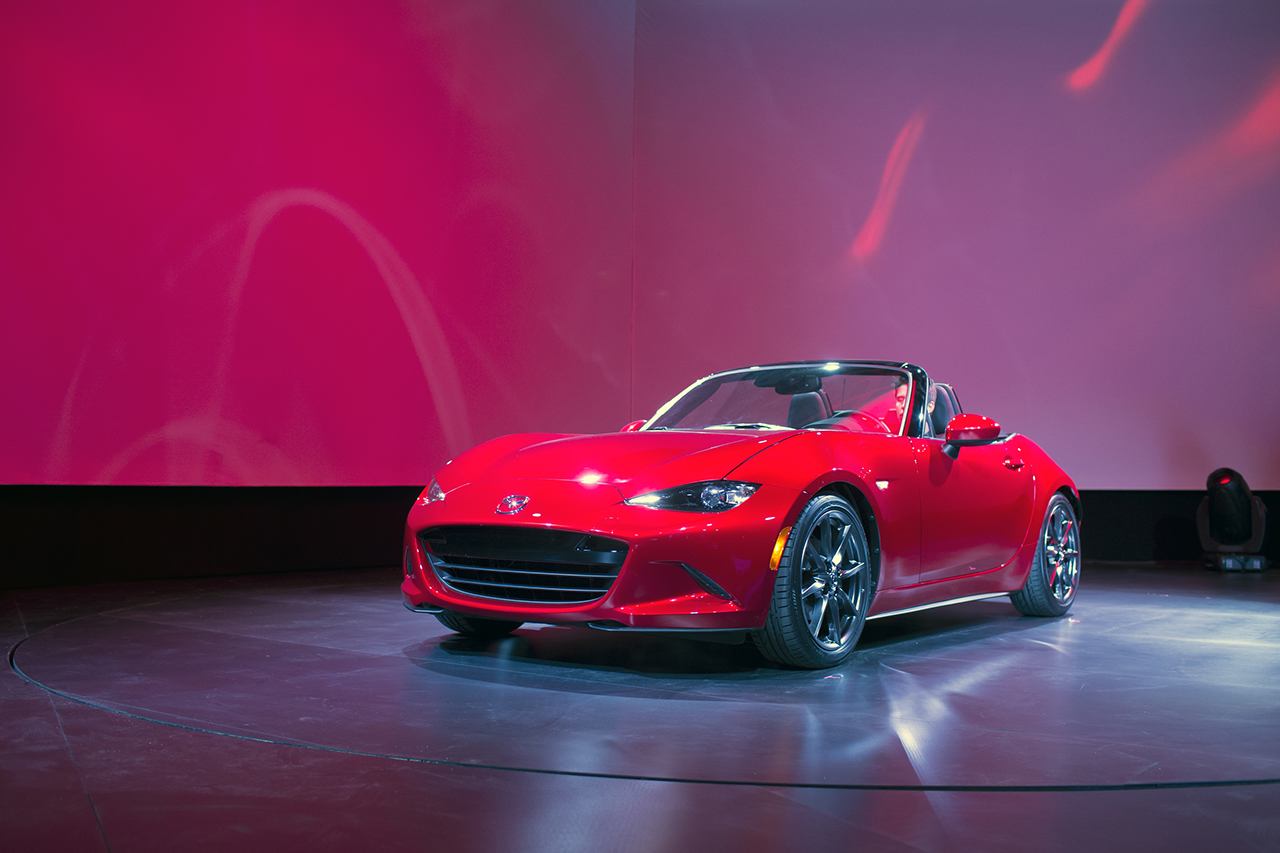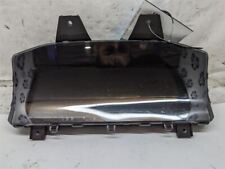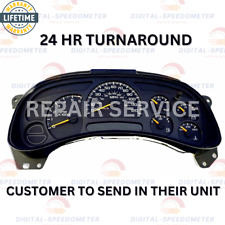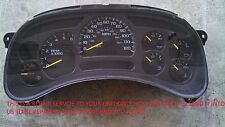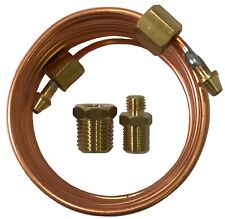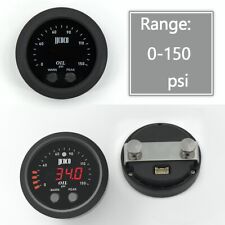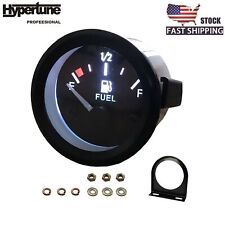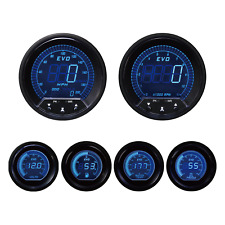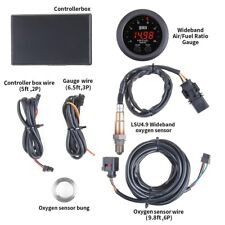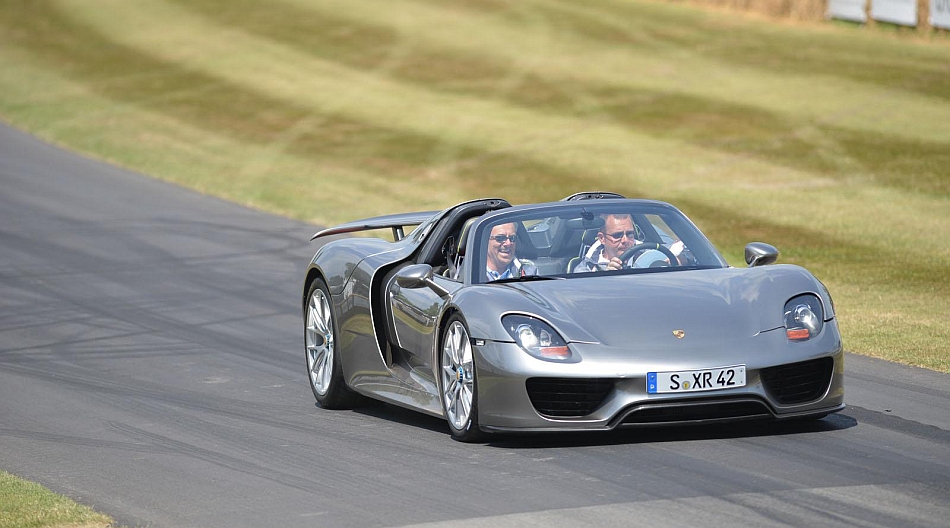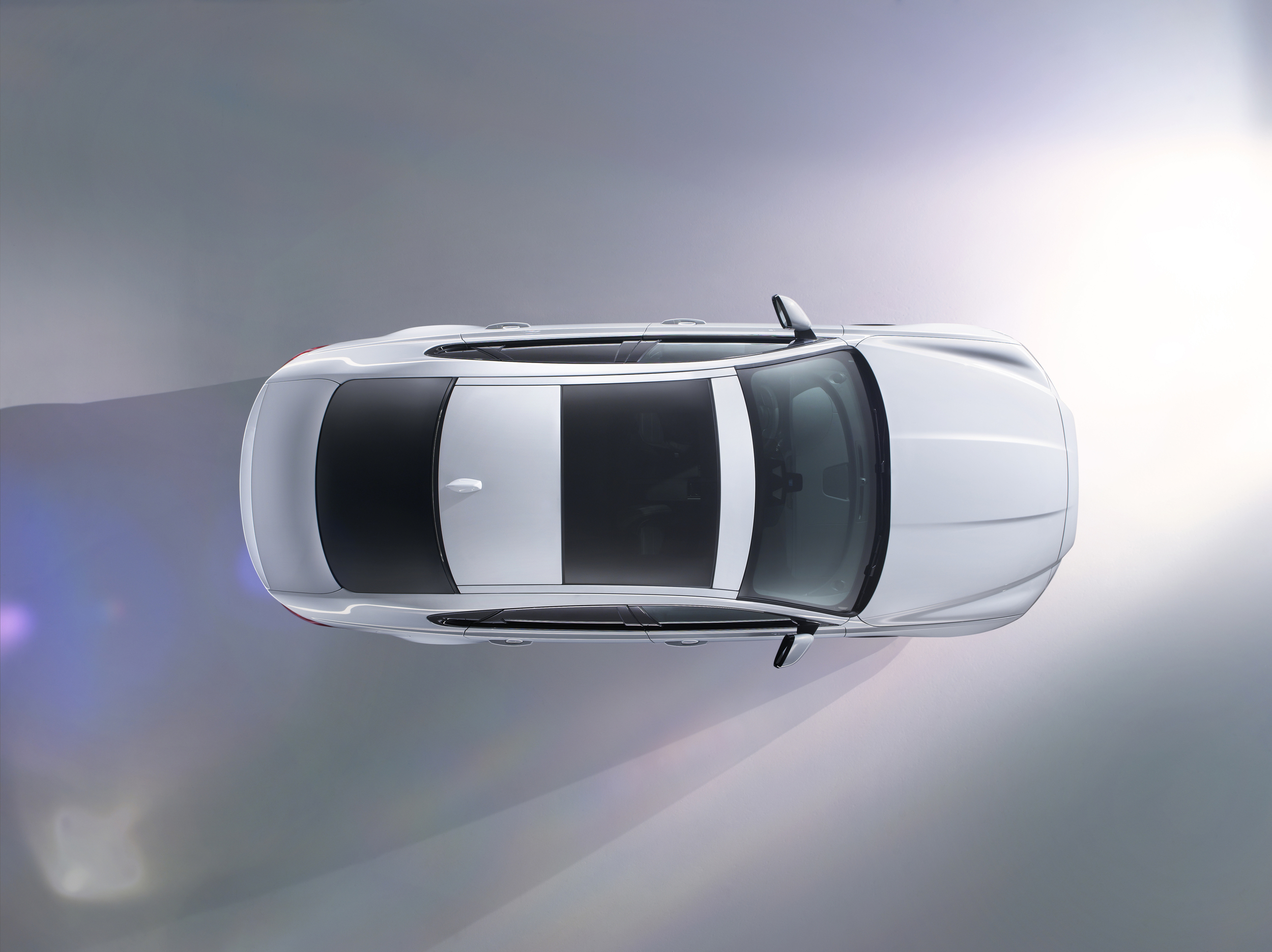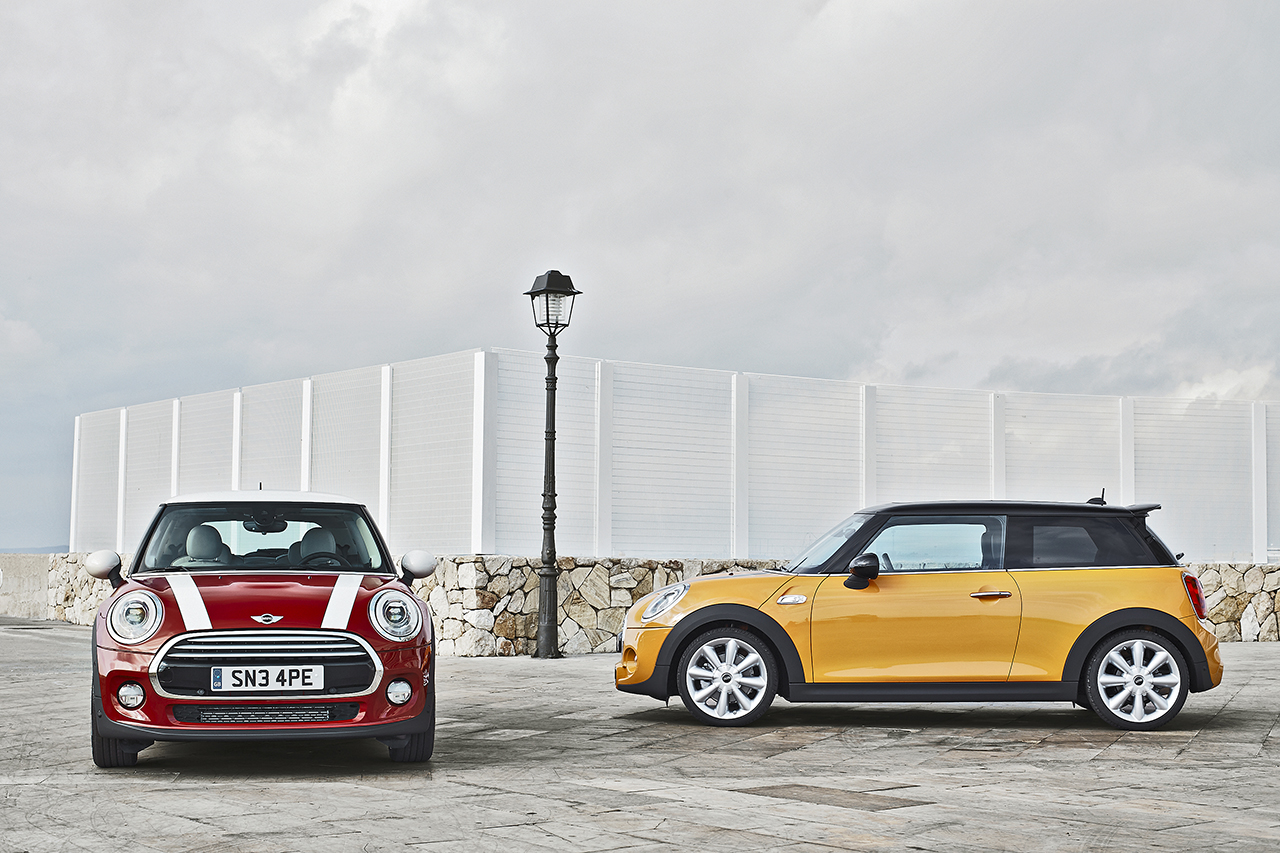2014 LA Auto Show: The 2016 Mazda Miata MX-5 takes its bow for North America
Alongside the revealing of the new CX-3 and the updated Mazda6, Mazda also introduced the Miata in US-spec form at the Staples Center for the LA Auto Show.
We’re already familiar with the new Miata, but what’s confirmed is that the new Miata comes with a new 2.0L SKYACTIV-G four-banger that’s naturally-aspirated to cook out around 155hp and 150 lb-ft of twist with a six-speed manual transmission. A smaller 1.5L four is being made for foreign markets and won’t be available in the states.
The US-destined Miata also gets a double wishbone front suspension with a multi-link rear for the most precise handling, along with a sport-tuned electrically-assisted steering system and ventilated disc brakes.
It’s also slightly smaller in proportions than the outgoing model and is based off of Mazda’s new rear-wheel drive architecture. Mazda also boasts the new Miata maintains a 50:50 weight-distribution for optimal handling.
For the press release, check it out after the jump.

—————————————————
2016 Mazda MX-5 Product Release
Nov 18, 2014
8:00pm
Innovate in order to preserve – a 25th anniversary resolution
It is with great pleasure that we are now ready to introduce the fourth-generation Mazda MX-5, (Japanese name: Mazda Roadster). As a member of the MX-5 development team and a passionate sports car enthusiast, I am deeply grateful to all the people who created, fostered and supported this car over the years. To see that so many people around the world continue to admire the MX-5 even now, 25 years after its launch, makes me happier than I can express. It is thanks to their passion, and the different ways owners and fans enjoy this car, that the MX-5 has matured and evolved over the last quarter century. I also wish to express my gratitude and heartfelt respect to the European carmakers that originally pioneered the fun-to-drive lightweight sports car, to our staff in the U.S. who hatched the MX-5 plan more than 25 years ago, and to the many Mazda employees in Hiroshima and around the world who helped refine it and supported its evolution over the years.Features that have been handed down from generation to generation
The Jinba Ittai driving experience exemplified by Mazda’s brand icon, the MX-5, is no longer the exclusive domain of lightweight sports cars. Rather, it has become the essence of every vehicle that Mazda builds. As symbolized by the challenge of developing the world’s first mass-production rotary engine, the spirit of constantly striving to meet new challenges is very much part of the Mazda DNA. The passion of the engineers and designers who were carrying on that spirit is what directed the development of the original MX-5, which in turn became the starting point for the Jinba Ittai driving experience. This evolved further and played no small role in the development of SKYACTIV Technology, the KODO−Soul of Motion design language and other innovations. Over its 25-year history, the Mazda MX-5 has brought drivers and cars closer together in its never-ending quest to deliver a faithful response and an enjoyable driving experience, whether cruising at slow speeds or enjoying a high-speed run. At the same time, it helped establish the Mazda brand’s unique reputation for providing driving pleasure.An open-top sports car that all drivers can truly enjoy
Right from the first generation, our philosophy for the MX-5’s development has remained the same: create a car that delivers true driving pleasure and is an irreplaceable partner for the people on board – and onlookers, too – brightening and cheering their mood. In addition to lessons learnt from our predecessors, we carried out advanced research into human sensitivity, developed new technologies, met a wide range of challenges, broke through barriers and finally realized the pleasure of the lightweight sports car as best suits the times. This includes Mazda’s hallmark Jinba Ittai, the feeling of oneness between car and driver as the driver enjoys a fresh breeze in an open-top sports car, and the “Lots of Fun” characteristics that go beyond ordinary driving pleasure. These two themes have been the unchanging watchwords guiding the MX-5’s development as we continued to enhance the model’s driving pleasure while meeting increasingly pressing customer demands for comfort, safety and environmental performance.It is the reason why all generations of the MX-5 have preserved the principal requirements of building a lightweight sports car featuring a compact open-top two-seater body, a front-midship engine rear-wheel-drive configuration, a 50:50 front-rear weight distribution, a low yaw inertia moment and an affordable price. Equally as important has been to evolve its value proposition as an open-top sports car that all drivers can truly enjoy anywhere and at any time.
Engineering devoted to taking our original aims into the future
Development of the fourth-generation MX-5 became a struggle with the model’s 25-year history. It also marked a challenge to connect that history to the coming 25 years. Over the past quarter century, the demands for greater environmental performance and safety have grown increasingly more stringent. Each successive model of the past three generations has seen slight increases in body size and weight in response to these demands. In developing the fourth-generation MX-5, we returned to the original aims of the first generation that had restored the culture of the lightweight sports car and then took on the challenge of embodying the fundamental pleasure of driving an open-top lightweight sports car in a product suited to today’s needs. In other words, Mazda firmly believes that the fun of being one with the car – the exhilaration felt by any driver on any kind of road – must be maintained. To do this, Mazda considers it essential to realize a different kind of innovation that goes far beyond mere product refinement. This is clearly summed up by the maxim “innovate in order to preserve,” which expresses the challenge behind the development of the fourth-generation MX-5.There is no doubt that the key to realizing this lays with the effective implementation of SKYACTIV Technology, which strikes the right balance between reduced weight and environmental performance and safety. It also includes KODO design, which brings the presence of a living creature and a strong sense of vitality to the car. At the same time, we also went back to the original intention of the first generation. We asked ourselves how best to awake the driver’s innate sensibilities as we aimed to further enhance the MX-5’s Jinba Ittai driving experience and raise the level of fun associated with every detail when it comes to owning, viewing, customizing and gathering with friends.
Toward this purpose, we delved further into the engineering concepts of Kansei Engineering employed since the first generation as we made a concerted effort to appeal to the senses and sensations through which people enjoy cars and thereby realize an unprecedented level of driving pleasure. We fully adopted the latest implementation of Mazda’s SKYACTIV Technology and its related theories as part of a thorough effort to achieve the ideal structure for a lightweight sports car. The result is the most compact body size of any MX-5 generation combined with a weight reduction of more than 100kg over the third-generation model.
The MX-5 has steadily evolved in a way that is only possible thanks to an unchanging passion shared between Mazda and countless MX-5 owners and fans around the world. As the current program manager of this product, I am both profoundly appreciative and keenly aware of the great responsibility I bear. This explains why we can never take a break from “innovating in order to preserve” if we want the MX-5 to continue to be the recipient of such passionate adoration for the next 25 or 50 years. This is our duty as the developer, and at the same time it’s an exciting dream, a source of happiness, and something we are proud of. It is also a conviction that will surely be inherited by the next generation of engineers who work on the MX-5. We are ready for the challenges of the next quarter century and beyond, always inspired by the passion of our fans around the world.
Nobuhiro Yamamoto
Mazda MX-5 Program Manager
Product Concept
Joy of the Moment, Joy of Life
– Appealing to the senses and sensations through which people enjoy cars –The significance given to maximising the Jinba Ittai and “Lots of Fun” experiences means that Mazda did much more than simply develop a compact sports car. Rather, the MX-5 was made to be looked at, to perform and respond faithfully to the driver’s will, to deliver a pleasing tactile experience, to emphasize the owner’s character, and to enjoy with friends. Just having an MX-5 makes life more pleasant and more colorful. Mazda built the MX-5 with the hopes that it would become a presence that transcended its existence as a mere car. To carry on the MX-5’s rich tradition while more purely than ever embodying the essence of what appeals to the senses and sensations through which people enjoy cars, the development team made every effort to further evolve the product. Particular effort went into advancing the following three elements.
First was to create a design that would set anybody’s heart pounding with excitement. Just one look at the fourth-generation MX-5 should get one’s pulse racing. Sitting in it should bring a smile to the driver’s face and instantaneously spark an urge to take the top down and go for a drive. And it should become a cherished part of the owner’s life as time passes. These joyful attributes are what the development team aimed to express in an even purer state with the fourth-generation MX-5. In pursuit of them, they worked to add greater depth to the KODO design language, to embody beautiful proportions that make the occupants stand out and look even better, and to make the open-air roadster experience all the more enjoyable. Specifically, development focused on the following.
- Beautiful proportions that make the occupants stand out and look good.
- A deeper expression of the KODO design language that conveys agility.
- Body surfaces that richly express the Japanese sense of contrast between stillness and motion.
- An interior design that melts away the boundaries between the inside and outside of the car.
- A snug feeling cockpit with symmetry and a singular axis that enables concentration on driving.
The second element is to deliver a driving experience that will captivate any driver. For every generation of the MX-5, importance was placed on appealing to the senses and sensations through which people enjoy cars, rather than focusing merely on sheer performance. With “sensation” as the keyword for the fourth-generation MX-5, development efforts focused on making the car even more enjoyable to control and faithful in its response. When driving in typical daily situations, the car responds directly to the driver’s will, as though it were extension of the driver’s own body. When enjoying a sporty run along winding roads, it responds faithfully to the driver’s actions in pleasingly light fashion. Every effort went into further refining these attributes to realize the ultimate Jinba Ittai driving experience that will captivate any driver. Specifically, development focused on the following.
- The latest SKYACTIV Technology and Mazda’s “gram strategy” combine to significantly reduce weight by more than 100kg over the third-generation model.
- Front-midship engine rear-wheel-drive configuration achieves an ideal 50:50 front-rear weight distribution.
- The engine is located closer to the vehicle’s center, the hood, trunk lid, front fender and front and rear bumper reinforcements are made of aluminum, and the weight of the soft top is reduced. These combine to realize a lower yaw inertial moment and a lower center of gravity.
- The pedals, controls, meters and all equipment are optimally positioned to enable the driver to maintain a straight posture and drive comfortably.
- The height of the hood is lowered and the A-pillars and windshield header are moved rearward and made thinner to create a panoramic view with greater visibility of road conditions and peripheral movement.
- New lightweight yet highly rigid suspension fully leverages the know-how of SKYACTIV Technology, with a double-wishbone suspension in the front and multilink suspension in the rear.
- The brake system is designed to maximize controllability and deliver reassuring effectiveness, plenty of braking power and an optimized posture when braking.
The third element is a pleasantly refreshing roadster experience that anyone can enjoy. It embodies the feeling of openness only possible with an open-top lightweight sports car, a feeling that can quickly lift anybody’s spirits anywhere and at any time while enjoying a drive with the top down. To achieve this, development focused primarily on the following.
- The MX-5 is designed to be beautiful even with the top down.
- The interior is designed to maximize the pleasure of driving with the top down.
- The soft top can be operated easily while remaining seated.
- Wind control makes the drive pleasurable when the top is down.
- Headrest speakers enhance the enjoyment of driving with the top down.
In addition to the three aforementioned elements, the fourth generation further evolves the pleasure of adapting the MX-5 to reflect the owner’s character. Furthermore, satisfying the demands of the day are Mazda’s latest-generation Human-Machine Interface (HMI) and Mazda Connect, Mazda’s next-generation car connectivity system that efficiently links the driver to the car and the outside world. A human-centric perspective was adopted in the pursuit of developing advanced safety performance based on the Mazda Proactive Safety philosophy to appeal to the senses and sensations through which people enjoy cars and enable the driver to fully enjoy the driving experience.
Overview
Design
A design to set the heart racing
For the fourth-generation MX-5, the development team was not going to be satisfied with a mere facelift. Nor were they prepared to aim for a design that simply accommodates current trends. Mazda’s only desire was to satisfy its vision of how an open-top lightweight sports car should look. It had to light a fire of excitement in the hearts of all those who relate to the stance Mazda assumed in developing the model over the past quarter century, and who were anticipating the launch of an even purer embodiment of Mazda’s open-top lightweight sports car.Mazda’s first thought in aiming for the ultimate MX-5 design was to create beautiful proportions that make the occupants stand out and look good. True to its Japanese name – Mazda Roadster – the basic form of the MX-5 makes those riding in the car the stars when seen with the top down and windows lowered. As such, the packaging engineers assigned to the development team worked closely together to examine a wide variety of elements related to achieving a beautiful design when the top is down, and also to emphasize the driver’s seating position and embody beautiful proportions that best convey the satisfaction and exhilaration of driving the MX-5. This resulted in refinements such as moving the cabin a little toward the rear to create the appearance that the occupants are sitting at the body’s midpoint and lowering the hip-point of the seats in conjunction with the new design’s low center of gravity.
Based on the proportions that make the occupants stand out and look good, the development team took on the challenge of adding greater depth to the KODO design language and fully expressing all they wished for in the new design. This includes embodying KODO design’s characteristic stance with an expression of stability that makes the vehicle appear as though it is firmly gripping the road surface and creating an image of agility that makes the MX-5 appear ready to move instantly in any direction. The fine craftsmanship of Mazda’s renowned clay modelers creates contours that cause reflections off the body’s surfaces to change in a stunning fashion as the car moves. It makes the car look alive while at the same time creating a sense of emotional attachment that evokes a desire to stroke the surface with the palm of one’s hand. In addition, the lines travelling from the headlamps, peaking at the front fenders and converging in front of the rear tires before sweeping upwards over the rear fenders, create a sense of motion at varying speeds. Reminiscent of Japanese calligraphy, this represents the Japanese sensibilities bred into the MX-5.
The aim for the interior was to create a cockpit design that brings a smile to the face and gets the heart pounding just by looking at it, or by simply sitting in the driver’s seat. One example is how the body panels wrap around to extend right into the door trim and thereby dissolve the visual boundaries between the vehicle’s interior and exterior. When sitting in the cockpit, the driver sees a ridge line that extends in powerful fashion from the upper part of the door trim to the top of the front fenders. In addition to providing a feeling of open space as only possible with an open-top body, the lines emphasize a feeling of oneness between driver and car. The design also attempts to heighten the pleasure of driving an open-top sports car by enabling the driver to experience the change in the surrounding environment in real time. When sunlight filters through the trees, for example, or as light reflects as the sun sets. Careful attention paid to the shape of the door trim and to making the quarter windows more compact aims to actively control the flow of air that reaches the cockpit. The result is a pleasant cockpit environment with just the right amount of wind blowing in when driving with the top down. In addition, positioning the tachometer and small-diameter steering wheel on the same axis creates perfect symmetry between the round air-conditioning louvers to the right and left of the meter cluster. This serves to establish a single axis throughout the cockpit, while at the same time creating a pleasantly tight feeling to the cockpit that enables the driver to concentrate on driving. With special attention to every detail, Mazda focused on building the MX-5 to transcend its existence as a mere automobile and become a sports car that owners will truly love.
While paying due respect to the British as the pioneers of the genre and to the first-generation MX-5 as the car that rebuilt it in the modern age, the design aim for the all-new MX-5 was to create the ideal image of a Mazda lightweight sports car. Every inch of the MX-5 reflects this desire and the pleasure it intends to give to all who drive it.
History of the Mazda MX-5
A perpetual quest for driving pleasure that all can enjoy
Mazda announced the first-generation MX-5 at the Chicago Auto Show on February 9, 1989. At that time, virtually no open-type lightweight sports cars were available. The segment, which had blossomed in England in the latter half of the 1940s, gained popularity thanks to the agile handling, characteristic style and affordability of such vehicles. But after the 1960s, the market focused more on safety and comfort, and the cars in this category had all but disappeared. The aim of the engineers and designers at Mazda who produced the first-generation model was simply to bring back a fun-to-drive lightweight sports car for people around the world like themselves – people who just love cars and love to drive. To build a car that satisfies this passion for driving, they developed the MX-5 based on the principle requirements that it would combine a lightweight, compact open-top two-seater body with a front-midship-engine rear-wheel-drive configuration, a 50:50 front-rear weight distribution, a low yaw inertia moment and an affordable price. The simple, familiar nature of its compact sports car styling, the light feeling and faithful, linear response Mazda defined as Jinba Ittai, along with the open feeling it offered resonated with car lovers around the world. It soon won a number of awards, gained widespread popularity, and fan clubs big and small began to spring up worldwide. The second-generation model was revealed at the Tokyo Motor Show in October 1997, the third-generation model debuted at the Geneva Motor Show in February 2005. Production reached 900,000 units in February 2011and the MX-5 broke its own Guinness World Record as the world’s “best-selling two-seater sports car,” a title it had first achieved in May 2000.Merely looking at the MX-5 will make any car lover happy. All drivers, from beginners to those with racing experience, will be able to enjoy the best drive of their lives. Putting the top down and enjoying the refreshing feel of the breeze will bring a smile to anybody’s face. All drivers will experience a world of driving pleasure as only the MX-5 can offer.
Major specifications of Reference display vehiclesU.S. Specification Model (values show development targets)
Body type Open-top sports car Seating capacity 2 persons Overall length* x width x height 154.1in X 68.1in X 49.0in Wheelbase 91.1in Engine SKYACTIV-G 2.0 direct-injection gasoline engine Transmissions SKYACTIV-MT six-speed manual transmission Front suspension Double wishbone Rear suspension Multilink Steering Electric Power Assisted Rack & Pinion Steering (EPAS) Brakes (front/rear) Ventilated discs / Solid discs Tires 205/45R17 195/50R16
Inquiries:
Eric Booth, Mazda North American Operations, (949) 727-6144
David Gordon, Mazda Information Bureau, (714) 913-9943Mazda Media Site: http://www.mazdausamedia.com
Mazda MX-5 History
1983-
Mazda begins considering the development of an open-top lightweight sports car
NOV
Development project begins
1986
FEB
Development for mass production begins
1987
SEP
Final design is set
1989
FEB
World debut of the “Mazda MX-5 Miata” at the Chicago Motor Show
MAY
Sales begin in the U.S.A
SEP
Sales of the “Eunos Roadster” begin in Japan
OCT
Sales begin in Australia
1990
FEB
Sales begin in Europe (U.K., the Netherlands)
1993
JUL
Minor revision: Revised product with 1.8-liter engine replacing the 1.6-liter engine
1997
OCT
Second-generation Mazda MX-5debuted at the Tokyo Motor Show
1998
DEC
“Mazda MX-5 10th Anniversary Model” introduced
• A special limited edition model with the same specifications worldwide to commemorate the model’s 10th anniversary
• Production numbers: 7,500 units worldwide (500 for Japan and 7,000 divided between North America, Europe and Australia)
2000
MAY
Certified by the Guinness World Records as the world’s “best-selling two-seater sports car” (total production of 531,890 units)
JUL
Minor revision to the second-generation MX-5
• Significant improvements to the product, including changes to both the exterior and interior, improved output from the 1.8-liter engine, increased body rigidity, etc.
2005
MAR
Third-generation Mazda MX-5 debuted at the Geneva Motor Show
MAR
“Mazda MX-5 3rd Generation Limited Edition” debuted at the New York International Auto Show to commemorate the debut of the third-generation MX-5 (Production limited to 500 units)
APR
Guinness certification updated after production reaches 700,000 units
2007
JAN
Total production reaches 800,000 units
2008
OCT
Minor revision to the third-generation MX-5 introduced
• Improvements to the product, including changes to both the exterior and interior, improved output from the 2.0-liter engine, increased body rigidity, etc.
2009
JUL
“Mazda MX-5 20th Anniversary Model” goes on sale
2011
FEB
Total production reaches 900,000 units
2014
APR
Chassis of the fourth-generation Mazda MX-5 and “Mazda MX-5 25th Anniversary Edition” debuted at New York International Auto Show
• A special limited edition with the same specifications worldwide to commemorate the model’s 25th anniversary
2014
SEP
Fourth-generation Mazda MX-5 unveiled at simultaneous event in Japan, Spain and U.S.
Awards list of the Mazda MX-5
Year Country/Region Award (Granter) 2013 U.S.A. U.S. News Auto Rankings: #1 in Affordable Sports Cars (2014) 2013 Chile Chilean Car of the Year 2014: Sport Car of the Year 2014 2013 U.S.A. 2013 U.S. IQS Compact Sporty Car segment award 2012 Canada Golden Key: Best sports car – under $50,000 2012 Canada Le Guide de l’auto (the Car Guide): Best new roadster under $50,000 2012 Canada 2013 Convertible of the Year: Mazda MX-5 (The 4th annual Auto123.com Awards)
2012 U.S.A. KBB.com: 10 Best Road Trip Convertibles 2012 Indonesia 2012 Autocar Indonesia Reader’s Choice Awards: Favorite Convertible 2012 Germany AutoBild: Best brands in all categories 2012 Singapore Singapore Car of the Year 2011 (SGCM EDITOR’S PICK) 2012 Germany First Place, sports car category (up to 50,000 km and 100,000 km), in the DEKRA used car report 2012 2011 U.S.A. Car and Driver: 10 Best Cars of 2012 2011 U.K. Auto Express: New Car Awards Best Roadster 2011 2011 U.K. J.D. Powers Customer Satisfaction Surveys 2011: Winner, sports car segment 2011 Hungary Playboy Car of the Year 2011: Open-top sports car category 2011 U.K. CarBuyer Car of the Year 2011: Best Convertible 2011 U.S.A. 2011 J.D. Power U.S vehicle dependability study: Highest ranked compact sporty car 2010 U.S.A. Car and Driver: 10 Best Cars of 2010 2010 Germany Auto Trophy 2010: Best imported convertible under €30,000 2010 U.K. 2010 UK Vehicle Ownership Satisfaction Study: Best sports car 2010 U.S.A. Edmunds 2010 lowest True cost to own vehicles: Convertible under $35,000 2010 Slovakia Auto Motor a Sport: Best cars 2010 (B-section) 2009 Germany Auto Trophy 2009: Best imported roadster/convertible under €30.000 2010 U.S.A. Edmunds 2010 New Car Buying Guides: Top recommended convertibles under $25,000 2010 U.S.A. Cars.com: Play Car of the Year 2010 2009 U.S.A. Car and Driver: 10 Best Cars 2010 2009 Australia Wheels Gold Star Cars Awards: Best Sports Roadster under $150,000 2009 Ireland New car magazine 2009: Best roadster 2009 U.K. Auto Express New Car Awards: Best Roadster 2009 2009 U.S.A. Consumer Reports Top Picks 2008: Fun to Drive 2008 Philippines 2008 Philippines Car of the Year: Sexiest Car Award 2008 U.K. Auto Express Used Car Honours 2008: Best Roadster 2008 U.K. Auto Express New Car Honours 2008: Best Convertible 2008 U.S.A. Road and Travel 2008 Annual Sexy Car Buyer’s Guide: Top ten 2008 U.S.A. J.D. Power Initial Quality Study 2008: Highest-Ranked Compact Sporty Car 2008 Thailand Thailand Car Of The Year 2008: The Best Roadster 2008 U.S.A. Consumer Reports Top Picks 2008: Fun to Drive 2008 Canada World of Wheels Editor’s Choice: Best Convertible of 2007 2007 Germany Auto Trophy 2007: Best imported convertible under €30,000 2007 U.S.A. Car and Driver: 10 Best Cars 2008 2007 U.S.A. Edmunds 10 Most Affordable Convertibles 2007 (1st place) 2007 U.S.A. Luis Vuitton: Top Ten Sports Cars 2007 Scotland Scottish Car of the Year 2007: Best Drop-Top 2007 U.S.A. J.D. Power U.S vehicle dependability of 2004 model year (Compact Sporty Car)
2007 Thailand Thailand Car of the Year 2007: Best roadster 2007 U.S.A. Consumer Reports Top Picks 2007: Fun to Drive 2007 U.S.A. 2007 Cars.com Lifestyle Awards: Best Deal for Empty Nesters 2006 U.K. Top Gear Awards: Roadster of the Year 2006 2006 Australia Drive Car of the Year 2006: Best Convertible 2006 U.S.A. Environment Protection Agency: Most Efficient Two Seaters 2007 2006 Scotland Scottish Car of the Year: Best Drop-Top 2006 U.S.A. Edmunds Editor’s Most Wanted Awards: Convertible under $25,000 2006 New Zealand National Business Review: Sports Car of the Year 2006 Australia Wheels Automotive Design Awards: Overall Outstanding Automotive Design 2006 Germany autoscout24.com Internet Auto Award 2006: Best Imported Convertible 2006 U.K. Auto Express New Car Honours: Best Roadster 2006 U.S.A. Forbes Best Convertibles 2006: Best entry-level roadster 2006 U.S.A. Forbes Best Cars for the Bucks 2006: Best Convertible For The Bucks 2006 World 2006 World Car of the Year: one of the top three finalists 2006 U.K. Auto Express: Best used Roadster money can buy 2006 Canada World of Wheels Best Sport Coupe/Convertible 2006 Thailand Thailand Car of the Year 2005: Best Roadster 2006 New Zealand Driver Magazine: Driver Sports/Performance Car of the Year 2006 Hungary Playboy Car of the Year 2006: Sports Car/Convertible (price value category) 2006 U.S.A. Car and Driver: 10 Best Cars of 2006 2006 Hong Kong Car and Driver: 10 Best Cars of 2006 2006 U.S.A. Playboy: Most Fun on Wheels 2006 Australia Wheels 2005 Car of The Year 2006 U.K. What Car? Car of the Year 2006: Best open-top 2006 New Zealand 2005 New Zealand Car of the Year 2006 Japan Sport Nippon: King of Car 2005 Croatia 2006 Roadster of the Year 2005 New Zealand 2005 New Zealand Herald Car of the Year 2005 U.S.A. Car of the Year 2006 Top 10 2005 U.S.A. Car and Driver: 10 Best Cars 2006 (Best Roadster) 2005 Japan Fashion Color Award (Galaxy Gray Mica Body Color/Tan Interior Color) 2005 Japan Goods of the Year (Vehicle Category) 2005 Japan Best Design Award 2005 U.K. Top Gear: Roadster of the Year 2005 2005 Japan RJC Car of the Year 2006: 2nd Place 2005 Japan Car of the Year Japan 2005-2006 2005 Canada Golden Key: Best Sports car under $50,000 2005 U.S.A. Best Buy in Sport/Performance Car Class 2005 Japan 2005 Good Design Award (G-mark) Second-generation MX-5
Year Country/Region Award (Granter) 2005 U.K. 2006 Auto Express Used car Honours: Best Used Roadster Money Can Buy 2004 U.K. Autocar: Excellent Second Hand Buy 2004 Thailand Thailand car of the Year 2004: Best Roadster 2004 Denmark Bil Magasinet: Best Roadster 2003 Israel Auto Magazine: 2003 Sports Car of The Year 2003 U.K. Autocar: Best Handling Car 2003 Portugal Best Speed trophy in Portugal 2003 Thailand Thailand Car of the Year 2003: Roadster 2003 Denmark Bil Magasinet: Best Roadster 2003 New Zealand Best Mid Size Car 2002 Australia Wheels: Most significant car of the 1980s 2002 Hungary Playboy Car of the Year 2002 Thailand Thailand Car of the Year 2002: Roadster 2001 Portugal Best Speed trophy in Portugal 2001 U.K. Autocar: Top 10 Performance Car 2001 Japan Auto Color Award 2001 Grand Prix 2001 U.K. Auto Express Used Car Awards: Best Roadster 2001 Canada Automobile Magazine’s only “11 time All-Star winner” 2001 U.S.A. Car and Driver: 10 Best 2000 U.S.A. Consumer Reports Top picks for 2000: Fun to Drive 2000 U.S.A. Automobile Magazine 2000 All Star 2000 U.S.A. Motor Week TV Driver Choice Award: Best Convertible 2000 U.S.A. IntelliChoice 2000 Best Overall value of the Year Award: Best Base Sport model 1999 U.S.A. Sports Compact Car: Eight Great Rides 1999 U.K. Used Car Buyer: Best Sports Car under £10,000 1999 U.K. Good housekeeping: Sports & Coupe winner 1999 U.S.A. Consumer Reports: Best Buy 1999 U.K. Auto Express: Used Car winner Sports car 1999 U.S.A. Automobile Magazine 1999 All Star Best Entry-Level Sports Car 1999 U.S.A. Car and Diver: 1999 Ten Best Cars 1998 U.K. Autocar & Motor: Best Sports Car 1998 U.S.A. Car and Driver: 1998 Ten Best Car 1998 Scotland Scottish Sports Car of the Year 1998 U.S.A. Consumers Digest: Best Buy 1998 U.K. IBCAM Auto Design Award 1998 U.K. Auto Express: 1998 Best Convertible Car 1998 New Zealand NZ Autocar Magazine: Sports Car of the Year 1998 U.K. Autocar: 1998 Best Sport Car 1998 U.S.A. Consumer Digest: Best Buy in Sport Coupes/Sedan Category First-generation MX-5
Year Country/Region Award (Granter) 1997 Australia Wheels Magazine Top 10 of ’97 1997 Israel Auto Magazine 1997 Sports Car of the Year 1997 U.S.A. Automobile Magazine 1997 All-Stars 1996 Australia Wheels Magazine Top 10 of ’96 1996 Israel Auto Magazine 1996 Sports Car of the Year 1996 U.S.A. Consumer Digest: Best Buy in Sport Coupes/Sedan Category 1996 U.S.A. Automobile Magazine The Ten Most Significant Automobiles From the First Ten Years: Perfect Ten 1996 U.S.A. Consumer Reports: 1996 Cars Reliability, Sports/Sporty Cars Category (2nd Place)
1996 U.S.A. Consumer Reports: MY96 Most Fun to Drive Car 1996 U.S.A. IntelliChoice: Best Value in the Base Sports Car 1996 Israel Auto Magazine: Car of The Year 1996 U.S.A. Automobile Magazine 1996 All Stars 1995 Australia Wheels Magazine Top 10 of ’95 1995 U.K. Auto Express: Best Sports Car in 1995 1995 U.S.A. J.D. Power: Most Problem-Free in Class 1995 U.S.A. Automobile Magazine: 1995 All Stars 1994 Australia Wheels Magazine: Top 10 of ’94 1994 U.S.A. Automobile Magazine: 1994 All Stars 1993 Australia Wheels Magazine: Top 10 of ’93 1993 Germany Auto Motor und Sport readers’ poll: Best Import Convertible 1993 U.S.A. Automobile Magazine: 1993 All Stars 1993 Germany Auto Trophy 1993 Best Fun Car 1992 Australia Wheels Magazine: Top 10 of ’92 1992 Australia Best Buys of 1992 Sports Car under $47,280 1992 Germany Auto Motor und Sport readers’ poll: Best Import Convertible 1992 U.S.A. Automobile Magazine: 1992 All Stars 1992 Germany Auto Trophy ’92 Best Fun Car (readers’ poll) 1992 U.S.A. Car and Driver: Ten Best Cars 1991 Australia Wheels Magazine: Top 10 of ’91 1991 Hong Kong Automobile Magazine: Best Five Exterior Design Award 1991 Australia Best Sports Car under $45,000 1991 U.S.A. Motorweek TV: Driver’s Choice Awards 1991 U.K. What Car? Best Sports Car of the Year ’91 1991 Germany Auto Motor und Sport readers’ poll: Best Import Convertible 1991 Germany Auto Trophy ’91 readers’ poll: Best Fun Car 1991 U.S.A. Playboy: Sexiest Car For Your Girlfriend 1991 U.S.A. Automobile Magazine: 1991 All Stars 1991 U.S.A. Car and Driver: Ten Best Cars 1991 1990 U.S.A. Road & Track: Ten Best Cars in the World & Best Sports/GT ($13,000-21,000) 1990 Australia Wheels Magazine: Top 10 of ’90 1990 New Zealand Car of the Year ’90 1990 Australia Best Sports Car 1990 Denmark Prize of Honour ’91 1990 U.S.A. Motor Trend: Top Ten Trouble-Free Cars 1990 U.K. Buying Cars: Best Value Sports Car of the Year 1990 U.K. Middlesborough North Eastern Gazette: Sporting Car of the Year 1990 U.K. Newcastle Journal: Best Sports Car 1990 U.K. Autocar & Motor: Best Handling Car in the World 1990 U.S.A. J.D. Power Initial Quality Study: Most Trouble-Free Sports Car 1990 U.S.A. Motorweek TV: Best Sports Car, Driver’s Choice Awards 1990 U.S.A. Edison Best New Products 1990 U.S.A. Playboy: Most Fun to Drive, Cars for 1990 1990 U.S.A. Motor Trend: 1990 Import Car of the Year (2nd place) 1990 Japan Cosmopolitan Best Car ’89: Best New Model 1990 Japan Super Goods of the Year ’89: Golden Award 1990 Australia Modern Motor: Best Car ’89/90 & Best Sports Car ’89/90 1990 Germany Auto Motor und Sport readers’ poll: Best Import Convertible 1990 Japan Best Car: Grand Prix Exterior 1990 U.S.A. TIME Best and Worst of the Year ’89: Best (one of) 1990 U.S.A. Newsweek Best of the Decade: Best Design (one of) 1990 U.S.A. Business Week: Best Products of ’89 1990 Australia Car Australia: Best Sports Car 1989 1990 Australia Car Australia: Car of Australia ’89 1990 Australia Modern Motor: Best Car of 1989/90 1990 Australia Wheels Car of the Year 1989 1990 U.S.A. 1990 Automobile of the Year (inaugural award) 1990 U.S.A. Car and Driver: Ten Best Cars 1990 Japan Nikkei: Design of the Year 1989 Japan Trendy Goods ’89 Grand Prize (hobby & play category) 1989 U.S.A. Life: Hot Products for 1990 1989 U.S.A. Business Week: The holiday gift-giving section 1989 U.S.A. Automotive News: Coupe of the Year 1989 Japan Best Sporty Car, Kings of the Cars ’89 1989 Japan Promoters’ Cup, My Best Choice ’90 1989 Australia Wheels Magazine: Top 10 of ’89 1989 U.S.A. Popular Science: Best 100 Products 1989 Japan First prize, Smash Hit Goods ’89 1989 U.S.A. Motor Trend: Top Ten Import Buys ’90 1989 U.S.A. Road & Track: Five Best Cars in the World (inaugural awards) 1989 U.S.A. Autoweek: Most Fun, Chicago Auto Fair awards Mazda MX-5 production and sales figures
Production figures
CY
Total
1988
12
1989
45,266
1990
95,640
1991
63,434
1992
52,712
1993
44,743
1994
39,623
1995
31,886
1996
33,610
1997
27,037
1998
58,682
1999
44,851
2000
47,496
2001
38,870
2002
40,754
2003
30,106
2004
24,232
2005
29,950
2006
48,389
2007
37,022
2008
22,886
2009
19,341
2010
20,554
2011
14,995
2012
15,400
2013
11,639
2014 Jan-Sep
9,150
Total
948,280
Sales Figures
|
|
|
|
|
|
|
|
|
|
|
|
|
|
|
|
|
|
|
|
|
|
|
|
|
|
|
|
|
|
|
|
|
|
|
|
|
|
|
|
|
|
|
|
|
|
|
|
|
|
|
|
|
|
|
|
|
|
|
|
|
|
|
|
|
|
|
|
|
|
|
|
|
|
|
|
|
|
|
|
|
|
|
|
|
|
|
|
|
|
|
|
|
|
|
|
|
|
|
|
|
|
|
|
|
|
|
|
|
|
|
|
|
|
|
|
|
|
|
|
|
|
|
|
|
|
|
|
|
|
|
|
|
|
|
|
|
|
|
|
|
|
|
|
|
|
|
|
|
|
|
|
|
|
|
|
|
|
|
|
|
|
|
|
|
|
|
|
|
|
|
|
|
|
|
|
|
|
|
|
|
|
|
|
|
|
|
|
|
|
|
|
|
|
|
|
|
|
|
|
|
|
|
|
|
|
|
|
|
|
|
|
|
|
|
|
|
|
|
|
|
|
|
|

